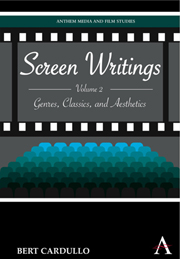Book contents
- Frontmatter
- Contents
- List of Illustrations
- Introduction: The Film of Value
- Part I Film Genres, Film Classics, and Film Aesthetics
- Interlude
- Part II Classification, Re-classification, and Assessment
- 8 Early vs. Later Bergman: Winter Light and Autumn Sonata Revisited
- 9 “Everyone Has His Reasons”: Words, Images, and La grande illusion in the Cinema of Jean Renoir
- 10 A Passage to Tokyo: The Art of Ozu, Remembered
- 11 Through the Looking Glass: The American Art Cinema in an Age of Social Change
- Bibliography of Related Criticism
- Index
- Plate section
8 - Early vs. Later Bergman: Winter Light and Autumn Sonata Revisited
from Part II - Classification, Re-classification, and Assessment
Published online by Cambridge University Press: 05 March 2012
- Frontmatter
- Contents
- List of Illustrations
- Introduction: The Film of Value
- Part I Film Genres, Film Classics, and Film Aesthetics
- Interlude
- Part II Classification, Re-classification, and Assessment
- 8 Early vs. Later Bergman: Winter Light and Autumn Sonata Revisited
- 9 “Everyone Has His Reasons”: Words, Images, and La grande illusion in the Cinema of Jean Renoir
- 10 A Passage to Tokyo: The Art of Ozu, Remembered
- 11 Through the Looking Glass: The American Art Cinema in an Age of Social Change
- Bibliography of Related Criticism
- Index
- Plate section
Summary
We live in a secular, narcissistic, even hedonistic age. Is there anyone out there who still doubts this? If you do, have a look at a film made by Ingmar Bergman over forty years ago – Winter Light (1962) – and you'll see what I mean. This is not to say that something like Winter Light couldn't be made now. We're dealing here with the rule and not the exception, the middle, not the extremities. Obviously, none of this is intended to denigrate Bergman's film as a mediocrity, or a priori to privilege contemporary films over it. Still, “men are as the time is,” as Edmund declares in King Lear, and no artist in any medium – particularly one so popular, or immediate, as the cinema – can claim exemption.
Winter Light takes place on what used to be a day of rest and devotion – the Sabbath, in this case one wintry Sunday in a rural clergyman's life, between matins and vespers. The middle entry in Bergman's “faith” trilogy, Winter Light suffers far less from the defect of the other two parts, Through a Glass Darkly (1961) and The Silence (1963): such an excess of symbolism that each picture breaks down into a series of discernible metaphors for spiritual alienation rather than an aggregation of those metaphors into an organic, affecting work. Though, apart from its literary-like piling up of symbols, Through a Glass Darkly relied on almost none of the arty legerdemain that marred The Magician (1958) and The Seventh Seal (1957), Winter Light is even starker and more circumscribed.
- Type
- Chapter
- Information
- Screen WritingsGenres, Classics, and Aesthetics, pp. 115 - 126Publisher: Anthem PressPrint publication year: 2010



